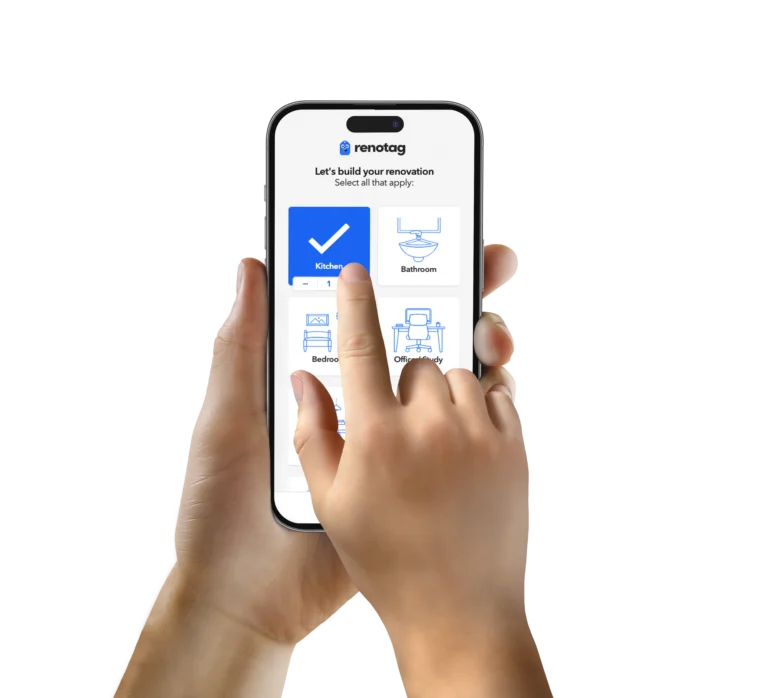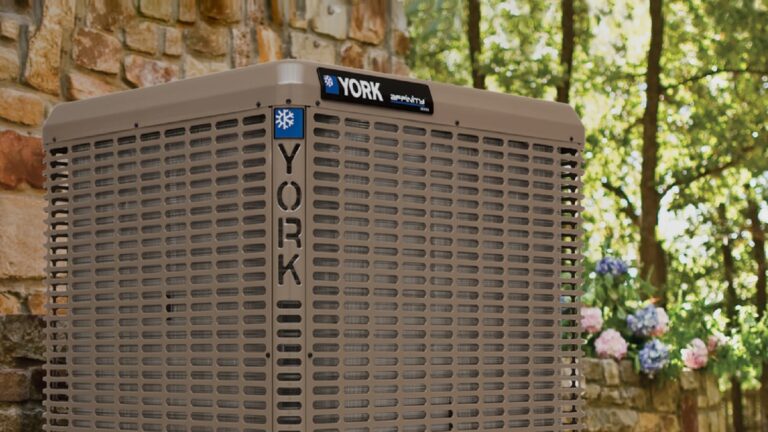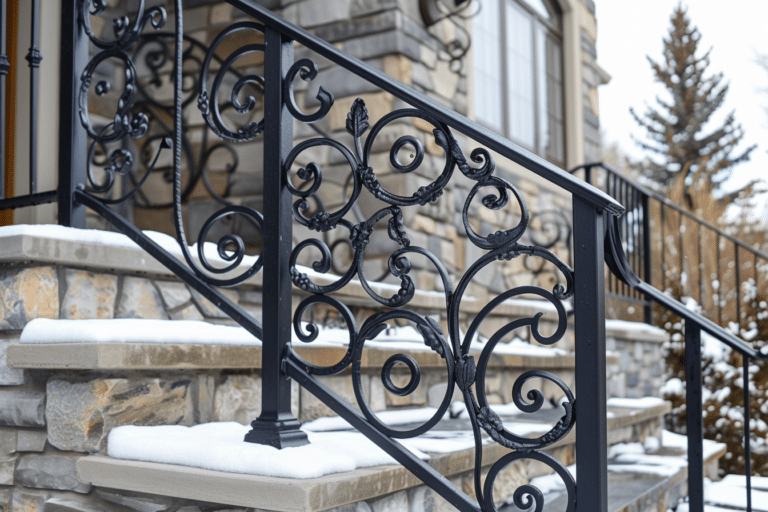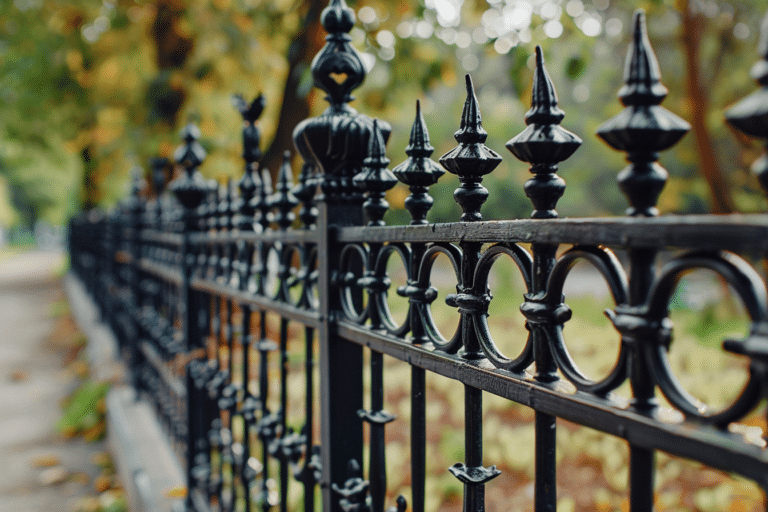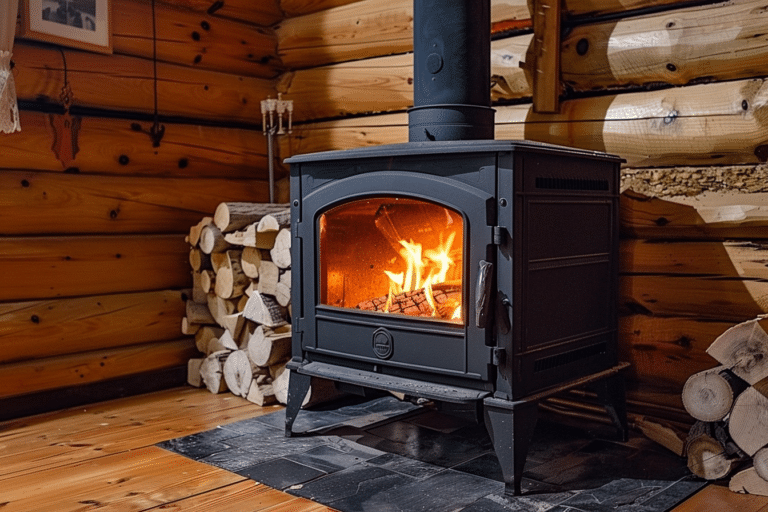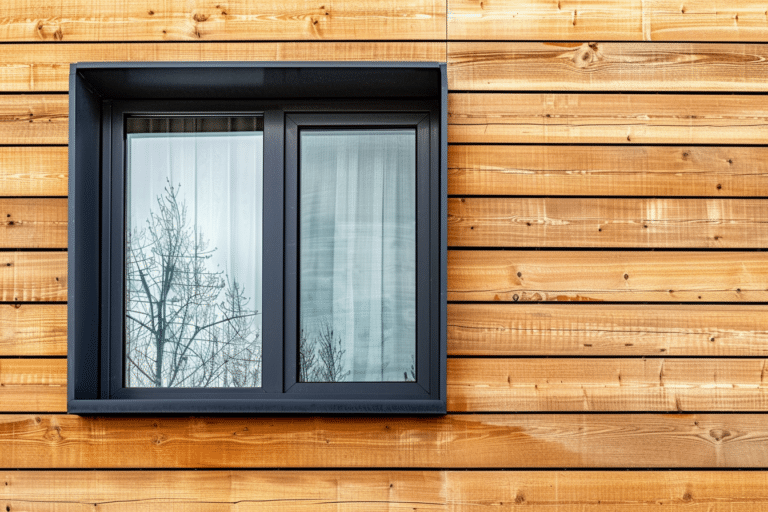Key Takeaways
- Cable railings with metal posts cost $150 to $285 per linear foot installed, while wood post systems are more affordable at $75 to $95 per linear foot.
- Composite post cable railing systems fall in the middle at $150 to $250 per linear foot installed.
- The total cost of a cable railing project depends on the materials used, the size and complexity of the installation, and local labor rates.
- Cable railings offer a modern, minimalist look with unobstructed views, but they may not be the most cost-effective option compared to traditional wood or metal railings.
- Proper installation and maintenance are crucial for the safety and longevity of cable railings, so it’s important to work with experienced professionals.
At Renotag, we know that choosing the right railing system for your deck or balcony is an important decision. Cable railings have become increasingly popular in recent years for their sleek, modern look and unobstructed views. But how much do these stylish railings actually cost? Let’s break it down.
Cable railing cost
The cost of cable railings varies depending on the materials used for the posts and top rail, as well as the size and complexity of the installation. Here’s a breakdown of the average cost per linear foot installed for different types of cable railing systems:
| MATERIAL | AVERAGE COST PER LINEAR FOOT INSTALLED |
|---|---|
| Stainless steel systems | $150 – $285 |
| Aluminum systems | $150 – $240 |
| Wood post systems | $75 – $95 |
| Composite railing system | $150 – $250 |
As you can see, stainless steel and aluminum cable railing systems are the most expensive options, with an average cost of $150 to $285 per linear foot installed. These materials offer superior durability and a modern, industrial look, but they come at a premium price point.
Wood post cable railing systems are the most affordable option, with an average cost of $75 to $95 per linear foot installed. These systems use traditional wood posts and top rails, with cable infill for a more contemporary look. While wood is a budget-friendly choice, it does require more maintenance than metal or composite materials.
Composite cable railing systems fall in the middle of the price range, with an average cost of $150 to $250 per linear foot installed. These systems use a combination of wood and plastic fibers for a low-maintenance, weather-resistant material that mimics the look of natural wood.
Let’s take a closer look at each of these options:
Stainless steel
Stainless steel cable railing systems are the most popular choice for modern, high-end homes and commercial properties. These systems use marine-grade 316 stainless steel cables and posts for maximum durability and corrosion resistance.
The average cost of a stainless steel cable railing system is $150 to $285 per linear foot installed. This price includes the cost of the cables, posts, top rail, and installation labor.
Stainless steel cable railings offer several benefits, including:
- Sleek, modern look
- Unobstructed views
- Low maintenance
- Excellent durability and corrosion resistance
- Suitable for coastal environments
However, there are also some potential drawbacks to consider, such as:
- Higher cost compared to wood or composite systems
- Can be prone to scratches or fingerprints
- May not be the best choice for traditional or rustic homes
If you’re looking for a high-end, modern railing system that will stand the test of time, stainless steel cable railings are an excellent choice. Just be prepared to pay a premium price for this level of quality and style.
Aluminum
Aluminum cable railing systems offer a similar modern look to stainless steel, but at a slightly lower price point. These systems use powder-coated aluminum posts and top rails, with stainless steel cable infill.
The average cost of an aluminum cable railing system is $150 to $240 per linear foot installed. This price includes the cost of the cables, posts, top rail, and installation labor.
Aluminum cable railings offer several benefits, including:
- Modern, minimalist look
- Unobstructed views
- Low maintenance
- Good durability and corrosion resistance
- More affordable than stainless steel
However, there are also some potential drawbacks to consider, such as:
- May not be as strong or durable as stainless steel
- Can be prone to scratches or dings
- Limited color options compared to wood or composite
If you want the modern look of cable railings at a more affordable price point than stainless steel, aluminum systems are a great choice. Just be aware that they may not be quite as strong or long-lasting as their pricier counterparts.
Wood
Wood post cable railing systems offer a more traditional look than metal systems, while still providing the open, airy feel of cable infill. These systems use pressure-treated wood posts and top rails, with stainless steel cable infill.
The average cost of a wood post cable railing system is $75 to $95 per linear foot installed. This price includes the cost of the cables, posts, top rail, and installation labor.
Wood cable railings offer several benefits, including:
- More affordable than metal systems
- Traditional, natural look
- Can be painted or stained to match your home’s aesthetic
- Easy to customize and modify
However, there are also some potential drawbacks to consider, such as:
- Requires more maintenance than metal or composite systems
- May not be as durable or long-lasting as metal
- Can be prone to warping, cracking, or rotting over time
If you want the look of cable railings on a budget, wood post systems are an excellent choice. Just be prepared to put in a little extra work to keep them looking their best over time.
Composite
Composite cable railing systems offer a low-maintenance alternative to wood, with the modern look of cable infill. These systems use a blend of wood fibers and plastic polymers for the posts and top rail, with stainless steel cable infill.
The average cost of a composite cable railing system is $150 to $250 per linear foot installed. This price includes the cost of the cables, posts, top rail, and installation labor.
Composite cable railings offer several benefits, including:
- Low maintenance
- Weather-resistant and durable
- Won’t warp, crack, or rot like wood
- Available in a range of colors and finishes
However, there are also some potential drawbacks to consider, such as:
- More expensive than wood systems
- May not have the same natural look and feel as wood
- Can be prone to fading or discoloration over time
If you want the modern look of cable railings with the low-maintenance benefits of composite, these systems are a great choice. Just be aware that they may not have quite the same warmth and character as natural wood.
Cable deck railing installation costs
In addition to the cost of the materials themselves, there are several other factors that can impact the total cost of a cable deck railing installation. Here’s a breakdown of some of the key cost factors:
| FACTOR | AVERAGE COST |
|---|---|
| Cable | $1 – 3 per linear foot |
| Post | $20 – $40 per post |
| Top rail | $20 – $40 per linear foot |
| Labor | $20 – $50 per linear foot |
| Total installed price | $75 – $285 per linear foot |
As you can see, the cost of the cables themselves is relatively low, at just $1 to $3 per linear foot. However, the posts, top rail, and labor can add significant costs to the project.
The total installed price for a cable deck railing system ranges from $75 to $285 per linear foot, depending on the materials used and the complexity of the installation. For a typical 30-foot deck railing, this translates to a total cost of $2,250 to $8,550.
Labor cost
Labor is one of the biggest cost factors in any cable railing installation project. The average labor cost for cable railings is $20 to $50 per linear foot, depending on the complexity of the installation and local labor rates.
For a typical 30-foot deck railing, this translates to a total labor cost of $600 to $1,500. However, this price can vary widely depending on factors such as:
- The height and configuration of the railing
- The number of corners or angles in the railing
- The accessibility of the installation site
- The experience and reputation of the installer
To get an accurate estimate of the labor costs for your project, it’s best to consult with several local contractors and get detailed quotes based on your specific needs and requirements.
Additional cost considerations
In addition to the cost of materials and labor, there are several other factors that can impact the total cost of a cable railing installation project. These include:
- Permits and inspections: Depending on your location and the scope of your project, you may need to obtain building permits and pass inspections before and after the installation. These fees can add several hundred dollars to the total cost of the project.
- Site preparation: If your deck or balcony requires repairs, reinforcement, or modifications to accommodate the new railing system, this can add significant costs to the project. Be sure to factor in any necessary site preparation work when budgeting for your cable railing installation.
- Customization and upgrades: If you want to customize your cable railing system with special features like LED lighting, glass panels, or custom metalwork, this can add significant costs to the project. Be sure to discuss any desired customization or upgrades with your installer upfront to get an accurate estimate of the total cost.
- Maintenance and repairs: While cable railings are generally low-maintenance, they do require regular cleaning and inspection to keep them looking and functioning their best. Be sure to factor in the cost of any necessary maintenance or repairs over the life of the railing system.
By considering all of these factors and working with a reputable installer, you can get a comprehensive and accurate estimate of the total cost of your cable railing project.
Cable railing FAQs
Is cable railing expensive?
Cable railings are generally more expensive than traditional wood or metal railing systems. The average cost of a cable railing system is $75 to $285 per linear foot installed, compared to $50 to $100 per linear foot for a wood railing or $60 to $200 per linear foot for a metal railing.
However, the actual cost of a cable railing project can vary widely depending on the materials used, the size and complexity of the installation, and local labor rates. In some cases, cable railings may be more affordable than other high-end railing options like glass or custom metalwork.
Ultimately, whether cable railings are expensive is a matter of perspective and budget. While they may cost more upfront than traditional railing systems, they offer a unique modern look and unobstructed views that many homeowners find worth the investment.
Are cable railings safe?
When properly designed and installed, cable railings are a safe and secure choice for decks, balconies, and stairs. Cable railings must meet the same building codes and safety standards as traditional railing systems, including requirements for height, spacing, and load-bearing capacity.
However, there are some potential safety concerns to be aware of with cable railings, such as:
- Cable tension: Over time, the cables in a railing system can loosen or sag, creating gaps that may pose a safety hazard. Regular inspection and maintenance are important to ensure that the cables remain taut and secure.
- Climbing hazard: The horizontal cables in a railing system may be tempting for children or pets to climb on, which can be dangerous. It’s important to educate children about the dangers of climbing on railings and to supervise them closely when near cable railings.
- Pinch points: The hardware and fittings used to secure the cables can create pinch points that may pose a risk of injury. It’s important to choose hardware that is designed to minimize pinch points and to install it properly to reduce the risk of accidents.
Despite these potential concerns, cable railings are generally considered a safe and reliable choice when designed and installed according to industry standards and building codes. If you have specific safety concerns or requirements, be sure to discuss them with your installer to ensure that your cable railing system meets your needs.
How far apart should cable railing be?
The spacing of the cables in a railing system is an important safety consideration, as it determines the size of the openings between the cables and the potential for objects or people to pass through.
According to the International Residential Code (IRC), the maximum spacing between the cables in a railing system is 3 inches. This means that the cables must be installed no more than 3 inches apart, measured from the center of one cable to the center of the next.
However, some local building codes may have more stringent requirements for cable spacing, so it’s important to check with your local building department to ensure that your railing system meets all applicable codes and standards.
In addition to the spacing between the cables, there are also requirements for the height of the railing system and the spacing between the posts. The IRC requires that railing systems be at least 36 inches tall, measured from the deck surface to the top of the railing. The posts must be spaced no more than 4 feet apart, measured from the center of one post to the center of the next.
By following these spacing and height requirements, you can ensure that your cable railing system is safe, secure, and compliant with building codes.
Where to buy cable deck railing?
Cable deck railing systems are available from a variety of sources, including:
- Home improvement stores: Many large home improvement retailers like Home Depot and Lowe’s carry cable railing systems and components. These stores typically offer a limited selection of styles and materials, but they can be a convenient option for small projects or DIY installations.
- Specialty railing suppliers: There are many companies that specialize in cable and other types of railing systems. These suppliers often offer a wider selection of styles, materials, and customization options than home improvement stores. Some popular cable railing suppliers include Feeney, Ultra-tec, and Atlantis Rail.
- Online retailers: There are many online retailers that sell cable railing systems and components, such as Amazon, Wayfair, and BuildDirect. Shopping online can be a convenient way to compare prices and options from multiple suppliers, but be sure to factor in shipping costs and lead times when ordering.
- Local fabricators and installers: Many local metalworkers, welders, and railing installers offer custom cable railing systems. Working with a local fabricator can be a good option if you have specific design requirements or need a custom solution for your project.
When choosing a supplier for your cable railing project, be sure to consider factors like:
- Selection and availability of materials and components
- Pricing and shipping costs
- Lead times and delivery options
- Customer service and support
- Warranty and return policies
By doing your research and choosing a reputable supplier, you can ensure that you get the right cable railing system for your needs and budget.
Getting estimates from cable railing installers
If you’re considering a cable railing system for your deck or balcony, one of the first steps is to get estimates from qualified installers. This will give you a better idea of the cost and scope of the project, and help you find the right contractor for your needs.
Here are some tips for getting estimates for your cable railing project:
- Do your research: Before you start contacting installers, do some research on cable railing systems and the different options available. This will help you ask informed questions and make better decisions throughout the process.
- Get multiple estimates: It’s a good idea to get estimates from at least three different installers to compare prices, options, and timelines. Don’t automatically go with the lowest bid, as this may not always reflect the best value or quality of work.
- Provide detailed information: When requesting estimates, be sure to provide detailed information about your project, including the size and layout of your deck or balcony, the type of railing system you’re interested in, and any specific design requirements or preferences you have. The more information you can provide upfront, the more accurate and comprehensive the estimates will be.
- Ask for references: When considering an installer, ask for references from previous clients and examples of their work. A reputable installer should be happy to provide this information and put you in touch with satisfied customers.
- Get it in writing: Once you’ve chosen an installer, be sure to get a detailed written contract that outlines the scope of work, materials, timeline, and payment schedule. Review the contract carefully and ask questions about anything you don’t understand before signing.
Questions to ask
When getting estimates from cable railing installers, here are some key questions to ask:
- How long have you been installing cable railings?
- What types of cable railing systems do you work with?
- Can you provide examples of previous projects and references from past clients?
- What is included in your estimate (materials, labor, permits, etc.)?
- What is your timeline for completing the project?
- How do you handle changes or unexpected issues that arise during the project?
- What kind of warranty or guarantee
